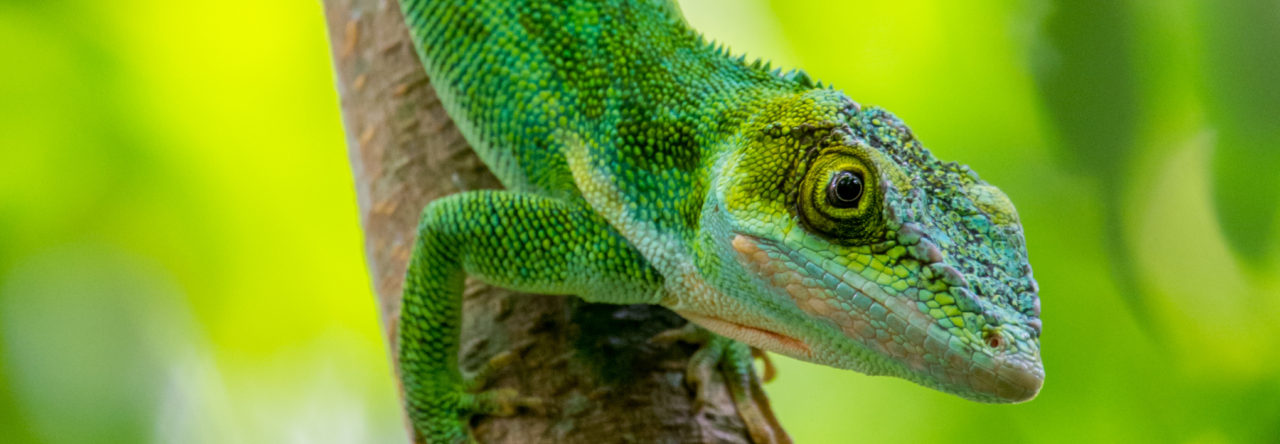
David Attenborough, fascinated by flat lizards.
Martin Whiting’s lab at the University of Macquarie has been very busy of late. In a single day, I received notice of two new, fascinating papers.
First, Whiting and colleagues described a gorgeous new species of flat lizard (Platysaurus) after Sir David Attenborough. Enough said. Read all about it in Zootaxa or on the Whiting Lab website, The LIzard Lab.
 The second paper, available online in Biological Journal of the Linnean Society, concerns a topic near and dear to Anole Annals: lizards with projections on their noses. We’re particularly hung up on horns (1,2), but some species have rostral blobs. Like the Sri Lankan Ceratophora tennentii. Whiting and colleagues examined this species, finding very little difference between the sexes, although males did have longer heads and bigger nasal projections. However, bite force did not correlate with nose size. What’s going on with the rostral appendages, as well as the color on the throat. labials, and inside the mouth, is unknown. A fascinating lizard worth more study!
The second paper, available online in Biological Journal of the Linnean Society, concerns a topic near and dear to Anole Annals: lizards with projections on their noses. We’re particularly hung up on horns (1,2), but some species have rostral blobs. Like the Sri Lankan Ceratophora tennentii. Whiting and colleagues examined this species, finding very little difference between the sexes, although males did have longer heads and bigger nasal projections. However, bite force did not correlate with nose size. What’s going on with the rostral appendages, as well as the color on the throat. labials, and inside the mouth, is unknown. A fascinating lizard worth more study!

Here’s the paper’s abstract:
Measures of physiological performance capacity, such as bite force, form the functional basis of sexual selection. Information about fighting ability may be conveyed through a structural feature such as a rostrum (i.e. horn) or a colour signal and thereby help reduce costly conflict. We quantified sexual dimorphism in key traits likely to be the targets of sexual selection in Tennent’s leaf-nosed lizard (Ceratophora tennentii) from Sri Lanka, and examined their relationship to bite force and body condition. We found body length and bite force to be similar for males and females. However, head length was significantly greater in males and they had significantly more conspicuous throats and labials (chromatic contrast and luminance) than females. Males also had a proportionally larger rostrum, which we predicted could be an important source of information about male quality for both sexes. Rostrum length was correlated with throat chromatic contrast in males but not females. Nonetheless, the rostrum and aspects of coloration did not correlate with bite force or body condition as we predicted. We have no information on contest escalation in this species but if they rarely bite, as suggested by a lack of difference in bite force between males and females, then bite force and any associated signals would not be a target of selection. Finally, males and females had similar spectral reflectance of the mouth and tongue and both had a peak in the ultra-violet, and were conspicuous to birds. Lizards only gaped their mouths during capture and not when threatened by a potential predator (hand waving). We hypothesize that conspicuous mouth colour may act as a deimatic signal, startling a potential predator, although this will need careful experimental testing in the future.
- Singapore National Parks Studying Impact of Introduced Brown Anoles (and the Greenhouse Frog) - May 2, 2025
- Evolution in Real Time on Lizard Island - March 23, 2025
- Spider Snags Adult Anolis osa - March 22, 2025



Leave a Reply